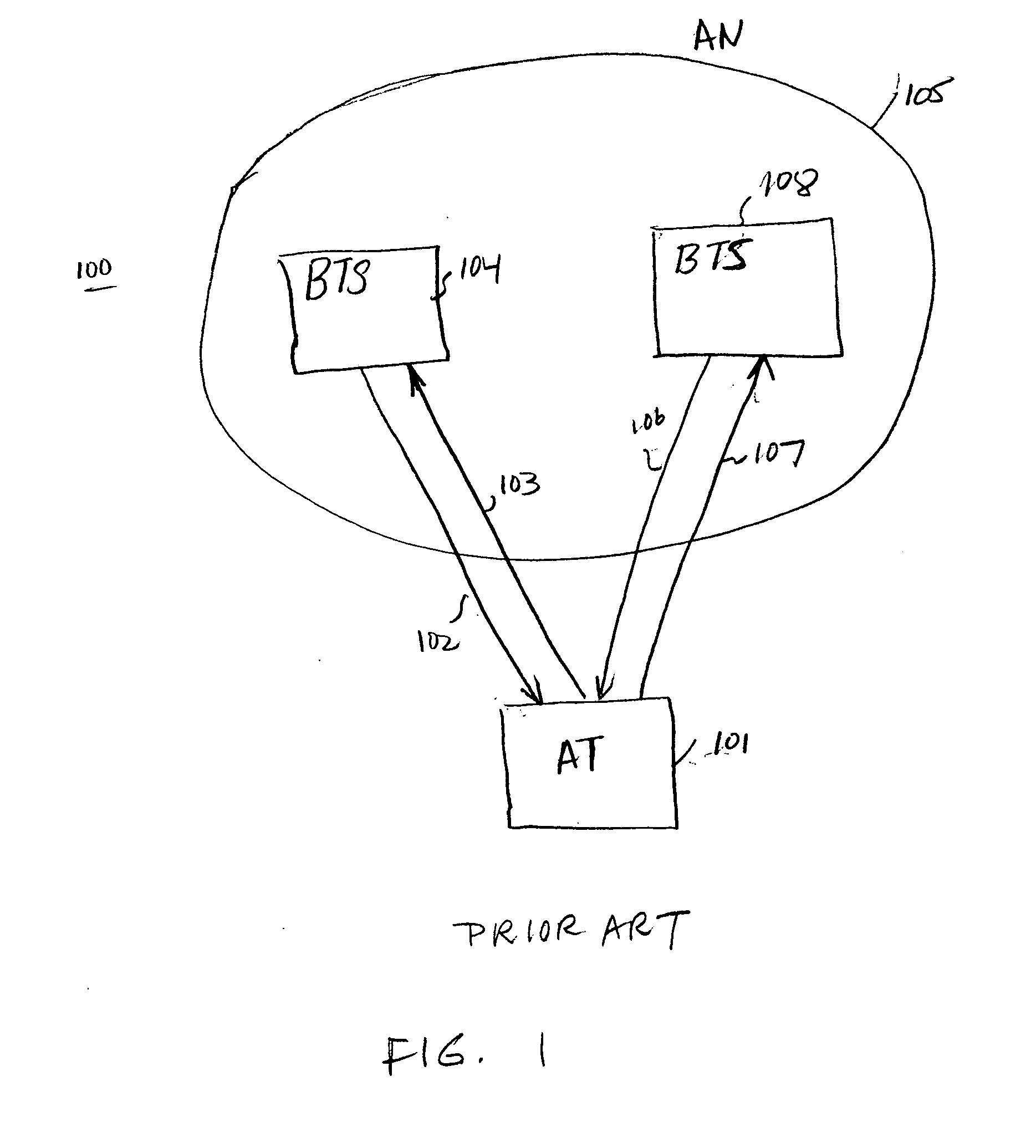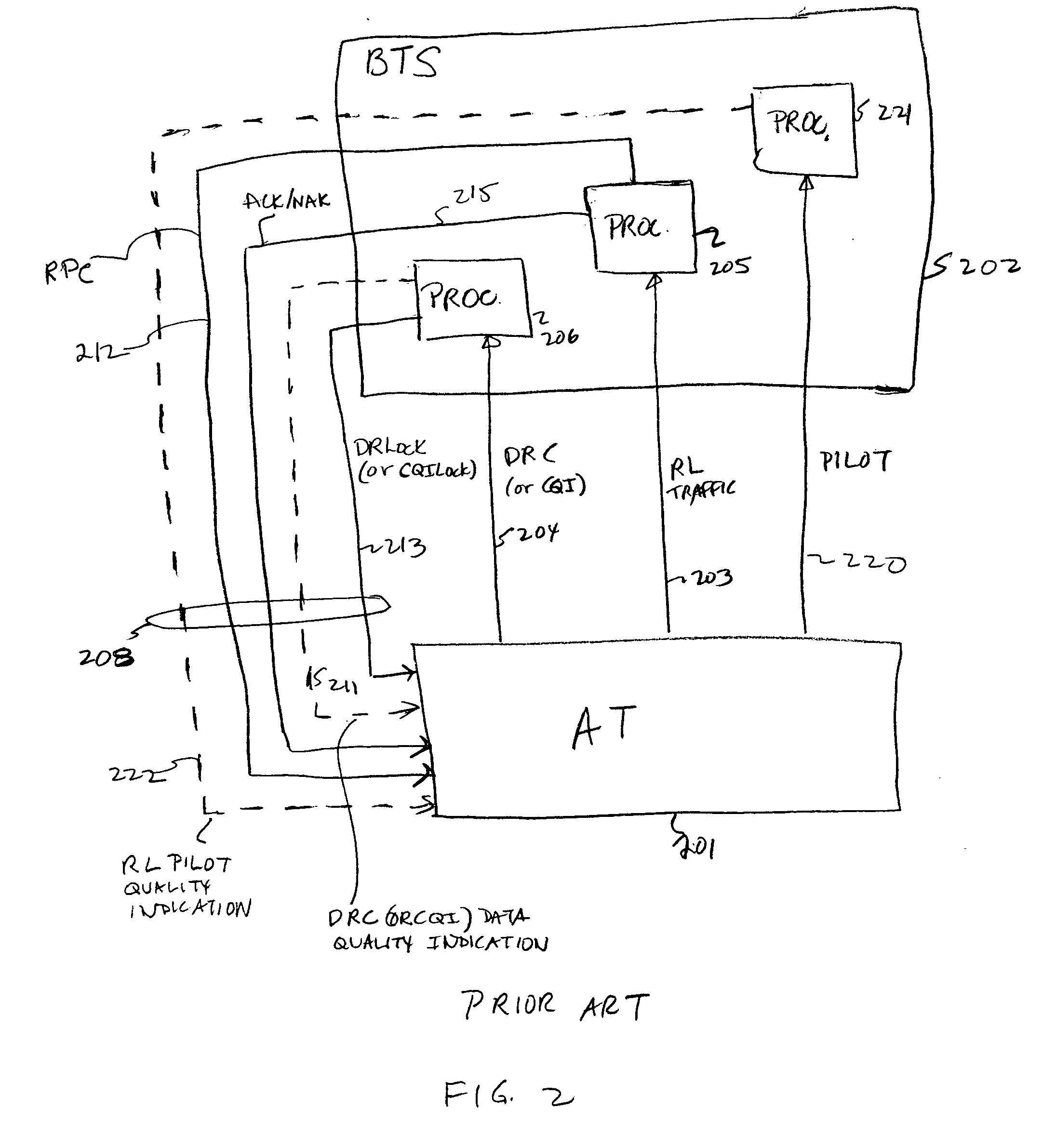Method of determining a serving sector switch with minimum forward link MAC channel feedback in a wireless communication system
a wireless communication system and switching sector technology, applied in the field of wireless communications, can solve the problems of limiting factors on the ability to increase the rl traffic capacity, reducing the overall throughput of the rl, delay increase and overall throughput, etc., and achieve the effect of reducing the short-term packet error rate, improving link quality, and improving the quality of the link
- Summary
- Abstract
- Description
- Claims
- Application Information
AI Technical Summary
Benefits of technology
Problems solved by technology
Method used
Image
Examples
Embodiment Construction
[0013]Although the following description is in accordance with adopted CDMA2000 EVDO RevA / RevB standards and RevC standards currently under development, and uses terminology commonly associated with those standards, it should be understood that the present invention could be used in other embodiments. The term Access Terminal, AT, should thus be understood to encompass any type of wireless terminal, cell phone, user equipment, etc. and the term Access Network, AN, should be understood to encompass any type of wireless communication network that includes a base station, base transceiver station, mobile switch, or other equivalent terminal with which a wireless terminal directly communicates. An ACK and a NAK represents any type of positive and negative acknowledgments that received data has been respectively successfully or unsuccessfully decoded.
[0014]With reference to FIG. 1, in a prior art wireless communication system 100 in accordance with CDMA2000 EVDO RevA / RevB standards, and ...
PUM
 Login to View More
Login to View More Abstract
Description
Claims
Application Information
 Login to View More
Login to View More - R&D
- Intellectual Property
- Life Sciences
- Materials
- Tech Scout
- Unparalleled Data Quality
- Higher Quality Content
- 60% Fewer Hallucinations
Browse by: Latest US Patents, China's latest patents, Technical Efficacy Thesaurus, Application Domain, Technology Topic, Popular Technical Reports.
© 2025 PatSnap. All rights reserved.Legal|Privacy policy|Modern Slavery Act Transparency Statement|Sitemap|About US| Contact US: help@patsnap.com



